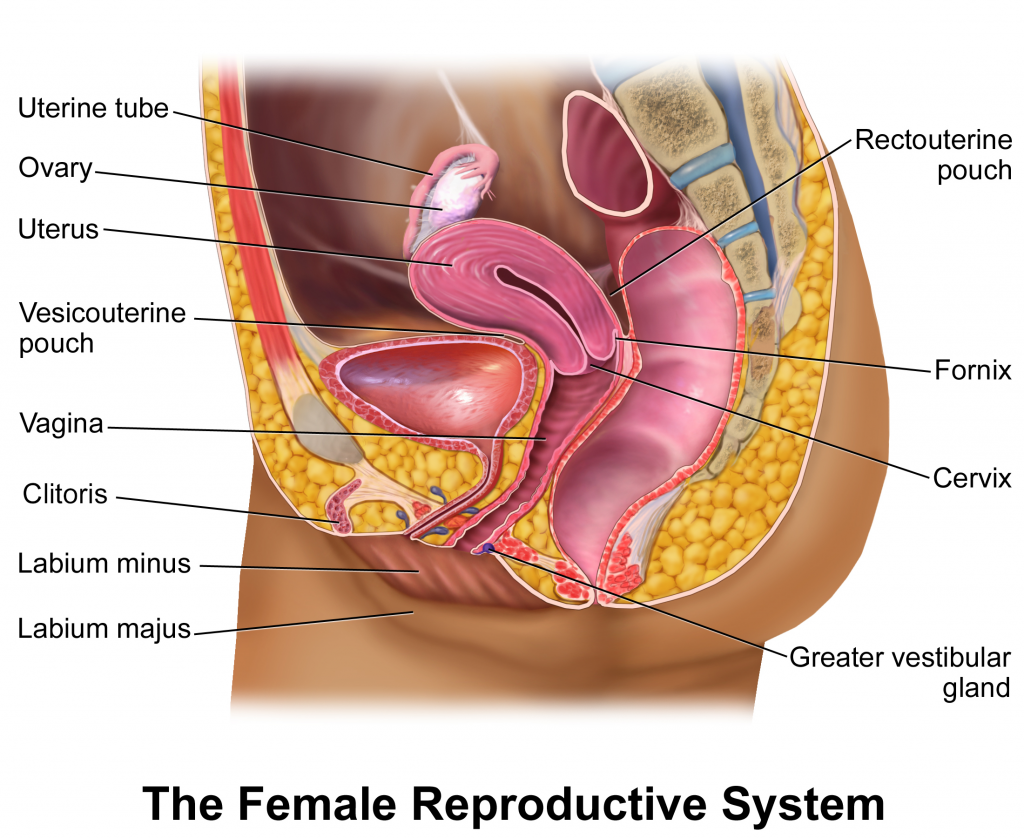The Female Reproductive System
Vagina
The vagina, shown at the bottom of (Figure 1), is a muscular canal (approximately 10 cm long) that serves as the entrance to the reproductive tract. It also serves as the exit from the uterus during menses and childbirth. The superior part of the anterior and posterior vaginal wall form recess anterior and posterior fornices—called the fornix—meet the protruded uterine cervix. A needle through the posterior fornix is used clinically to access the rectovaginal pouch during culdocentesis.
The walls of the vagina are lined with an outer fibrous adventitia, a middle layer of smooth muscle, and an inner mucous membrane with transverse mucosal folds called rugae. The extension of mucosa centrally forms the hymen. The middle and inner layers together allow the expansion of the vagina to accommodate intercourse and childbirth.

Vaginal mucosal cells are under the influence of estrogen hormones. Estrogen stimulates the cells to synthesize, store, and release glycogen. The vagina is considered home to a normal population of microorganisms that help protect against infection by pathogenic bacteria, yeast, or other organisms that can enter the vagina. In a healthy individual, the most predominant type of vaginal bacteria is from the genus Lactobacillus. This family of beneficial bacterial flora works on glycogen released by mucosal cells and secretes lactic acid, and thus protects the vagina by maintaining an acidic pH (below 4.5). Potential pathogens are less likely to survive in these acidic conditions.
Lactic acid, in combination with other vaginal secretions, makes the vagina a self-cleansing organ. Douching—or washing out the vagina with fluid—can disrupt the normal balance of healthy microorganisms, and increases a person’s risk for infections and irritation. Indeed, the American College of Obstetricians and Gynecologists recommend that individuals do not douche and that they allow the vagina to maintain its normal healthy population of protective microbial flora.
Take Home Message
- Estrogen stimulates vaginal mucosal cells to synthetize and secrete glycogen.
- Vaginal flora lyse the released glycogen and produce an acidic environment undesirable for pathogen survival.
- Vaginal acidity minimizes the entry of pathogens into the female reproductive system.
Image Sources
- Figure 1. “The female reproductive system” is from Bruce Blaus via Wikimedia Commons, licensed CC BY 3.0.

